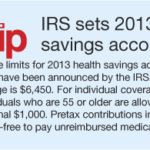“Saver’s Credit” Can Help You Save for Retirement
Low- and moderate-income workers can take steps to save for retirement and at the same time earn a special tax credit.
The “Saver’s Credit” helps offset part of the first $2,000 that workers voluntarily contribute to traditional or Roth Individual Retirement Arrangements (IRAs), SIMPLE-IRAs, SEPs, 401(k) plans, 403(b) plans for employees of public schools and certain tax-exempt organizations, 457 plans for state or local government employees, and the Thrift Savings Plan for federal employees. Also known as the “Retirement Savings Contributions Credit,” the Saver’s Credit is available in addition to any other tax savings that apply.
Unlike other workplace retirement plans, IRA contributions can be set up and funded after the end of the year. Thus, eligible workers have until April 15, 2013 to make qualifying IRA contributions for 2012 and get the saver’s credit on their 2012 tax return.
Taxpayers with 401(k), 403(b), 457 and Government Thrift plans who were unable to set aside money for 2012 may want to schedule their 2013 contributions soon so their employer can begin withholding them in January.
A taxpayer’s credit amount is based on his or her filing status, adjusted gross income, tax liability and amount contributed to qualifying retirement programs.
The saver’s credit can be claimed by:
- Married couples filing jointly with incomes up to $57,500 in 2012 or $59,000 in 2013;
- Heads of household with incomes up to $43,125 in 2012 or $44,250 in 2013; and
- All others with incomes up to $28,750 in 2012 or $29,500 in 2013.
Like many other tax credits, the Saver’s Credit is not refundable and can only reduce your tax liability. Though the maximum Saver’s Credit is $1,000 ($2,000 for married couples), taxpayers are cautioned that it is often much less and, due in part to the impact of other deductions and credits, may, in fact, be zero for some taxpayers.
Other special rules that apply to the saver’s credit include the following:
- Eligible taxpayers must be at least 18 years of age.Anyone claimed as a dependent on someone else’s return cannot take the credit.
- A student cannot take the credit. A person enrolled as a full-time student during any part of 5 calendar months during the year is considered a student for this credit.
- Certain retirement plan distributions reduce the contribution amount used to figure the credit.
If you have questions about how this tax benefit might apply in your situation, please give our office a call.




